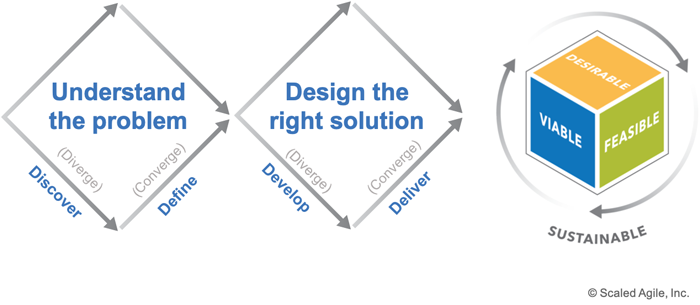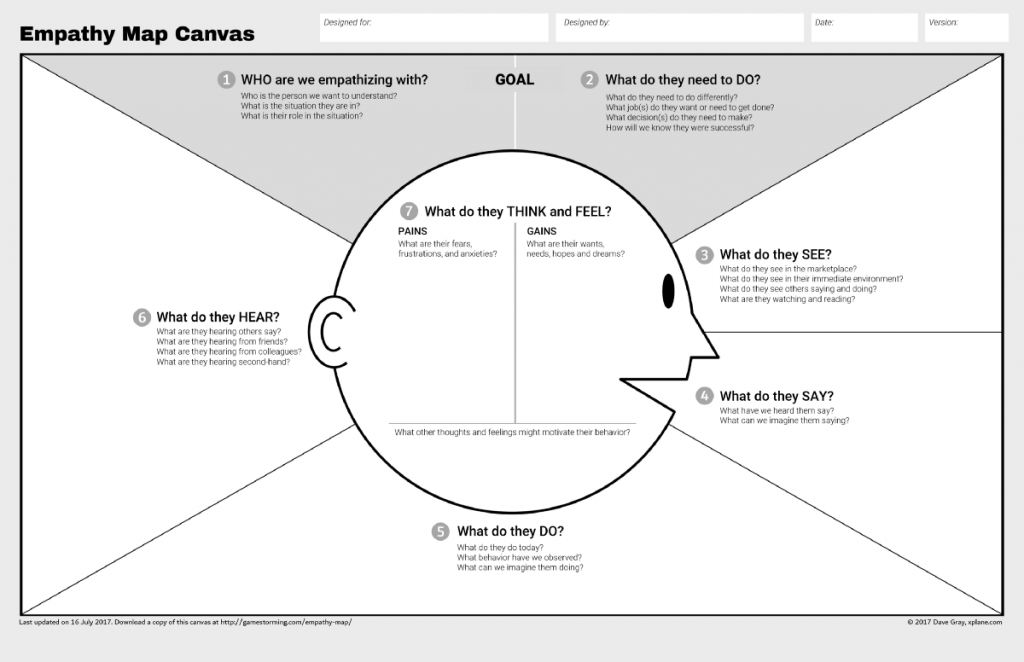It’s probably a safe bet that you’ve heard the term ‘persona’ before. A customer persona represents fictional representations of individuals likely to use or buy a product. They help the product team understand the users needs and wants.
We use agile personas whenever we write a user story, Agile user story always starts with AS A _____ I WANT TO ______ SO THAT _____.
This is referencing a potential user. The agile persona is one step deeper to try to represent the behaviours and background of the target user base so you can design around customer desires.
This is enough for most teams but if you want to 10X user story effectiveness and give the software development team more context you should consider creating and presenting them with user personas that they can look up later for reference.
- Agile Teams & Customer Centric Approach
- Effective User Personas
- Costs & Benefits of User Personas for Agile Teams
- Agile Persona Free Template
- Google Docs Persona Template
- What is an Agile development process?
- Scrum User Stories
- Artificial Intelligence generated persona
- Future Implications
- Alternatives to User Personas are Empathy Map
- FAQ Agile Personas
For example, you might write a user story AS A customer service agent I WANT TO find customers who have received a gift in last year SO THAT I can send out gifts to the ones that didn’t.
You could add more details about the customer service agent to give context. The customer service agent persona could be as follows:
- Age: 25
- Gender: Male
- Income: $50k
- Education Level: High School
- Residential Environment: Asia
- Skills: Excel, CRM,
- Challenges: Working remotely
This will give the team more context on the end user so they can suggest different ideas to help solve the problem. We can see the customer service agent is proficient in excel and as it was the last year this might be a one off task. The product team could suggest providing a csv file with all the information and see if that will help solve the problem before they jump to presumptions and build out search, sort functionality that is connected to a post office API to see which packages were delivered.
The more context the better for the team so they can make educated decisions.
Agile Teams & Customer Centric Approach

Without a user persona, developers design without focus or specificity. But, properly used, a comprehensive persona can supercharge a designer’s work, delivering the best-designed product possible. It is giving you insights into real users.
Fundamentally, user personas provide a deeper understanding of a target audience (also check out jobs to be done), answering the fundamental question, “Who are we designing for?” And by understanding the target audience’s expectations, concerns, needs, and motivations, something magical happens.
Customer centric software development usually includes one or two-page descriptions, personas include behavior patterns, goals, and skills. They may describe specific education and even contain detailed family information. And most have fictional pictures attached.
Effective User Personas
Agile teams rarely have the luxury of extensive focus groups with the target customer associated with a product launch. Enter the ‘persona, a “customer stand-in,” guiding decisions about functionality and design.
The persona concept has also crept into our daily language. I’m sure you have heard the terms — ‘user friendly’ or ‘user experience.’ And is not just applied to software development.
Marketing team generally will use some form of consumer description or customer archetypes used in product launch strategies.
The design team use a customer persona to craft a sense of who would read their story or use the information provided.
The product team create personas to determine the best possible function. And product managers strive to create the perfect customer persona.
Clearly, personas are a vital tool in a consumer-based economy. But how does a development team gather more information, improving a product’s appeal even more?
Costs & Benefits of User Personas for Agile Teams
Persona creation costs time and treasure — sometimes as much as the product development cycle itself. But in recent studies, nearly half of all surveyed organizations claim to update their personas every one to four years – recognizing that customer demographics change.
Unsurprisingly, software development teams who update their customer personas quarterly or more saw the most significant impact on their product’s success by majority of users.
Using the Agile development process increases developmental predictability, shortens the Beta test stage or a software’s time from the design stage to market, — saving money and hopefully increasing sales.
Agile Persona Free Template
I discovered Roman Pichlers after reading his book Strategize a must read for product owners.

The Persona Template | Roman Pichler
Google Docs Persona Template
You can create a copy of my user persona template here by going to file and create copy (but you need to sign into gmail first).
What is an Agile development process?
The Agile development process consists of five primary stages: define, design, build, test, and release, with a possible sixth stage as – revise and repeat.
And it becomes clear that persona-lead feedback can be essential — serving as a sounding board during the five stages of development. In other words, developers ask, “if we design an app to have a purple interface, “how would persona A react?” or “what color would persona B choose?
This discussion helps development team design a more elegant user experience — increasing sales and keeping majority of users happy. However, if developers work without personas in a virtual vacuum, they will have little insight into their product’s viability.
Scrum User Stories
Scrum was first to coin user story format to describe a user role. It is simple and easy to write for the product team.
Artificial Intelligence generated persona
Advances in artificial intelligence (AI) expand the understanding of human behavior. Using meta-information, the AI digests surveys, reviews, documents, and social media — providing sociological, psychological, behavioral, and emotional information driving users and expanding personas. AI collects real-world data for an ideal persona. Ultimately, the more tweaking of the product and persona, the better.
And computer development is advancing our understanding of personas.
Future Implications
Agile-type personas have expanded into most major industries–digital applications, sales, and medicine. Everyone is after the ultimate positive ‘user experience.’ But a product lifecycle is never one and done, and if properly managed, developers can incorporate new information at any stage.
Alternatives to User Personas are Empathy Map

An empathy map is another tool that assists product owners in a deeper understanding of potential pool of users.
An empathy map focuses on the pseudo-individual’s psychological and emotional needs — including behaviors and motivations – not just basic demographics.
So, for example, product team are told that persona A loves purple. But they are also told ‘why’ purple is essential to our persona’s overall well-being. And, with this deeper understanding, product teams add a ‘purple choice.’
Ultimately, user personas answer the questions what, who, when, and where. Empathy maps answer the question, ‘why.’ Incorporating both allow developers to create a superior user experience.
